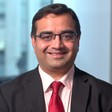
Accounting Balance Sheet

Saket Modi
20 years: Chartered accountant & educator
In this video, Saket breaks down the different categories of the balance sheet including assets, liabilities and equity. He also outlines two different ways of presenting the balance sheet, the 'current and non-current' presentation, and the 'liquidity' presentation, and when it is appropriate to use each of them.
In this video, Saket breaks down the different categories of the balance sheet including assets, liabilities and equity. He also outlines two different ways of presenting the balance sheet, the 'current and non-current' presentation, and the 'liquidity' presentation, and when it is appropriate to use each of them.
Subscribe to watch
Access this and all of the content on our platform by signing up for a 7-day free trial.

Accounting Balance Sheet
8 mins 52 secs
Key learning objectives:
Outline the different categories of items on the balance sheet
Explain the current and non-current classification of assets and liabilities on the balance sheet
Identify the assets and liabilities presented in the order of liquidity
Overview:
A balance sheet or statement of financial position provides a snapshot of the sources of funds and investments of an entity, as at a particular date. The elements of a balance sheet are assets, liabilities and equity and these elements form the fundamental accounting equation: Assets = Liabilities + Equity. The assets and liabilities may be presented on the balance sheet in current/non-current format or in the order of liquidity.
Subscribe to watch
Access this and all of the content on our platform by signing up for a 7-day free trial.
What are the different categories of items on the balance sheet?
The balance sheet is categorised into the different elements which are assets, liabilities and equity.
- Assets are resources that an entity owns or controls. Examples of common items of assets are property, plant and equipment, debt or equity investments, inventories, receivables and cash and cash equivalents held by the entity.
- Liabilities are present obligations that generally result in outflow of cash in the future. Examples of common items of liabilities are loans or borrowings, provisions, trade payables and tax due to the government authorities.
- Equity is the residual value remaining after deducting the liabilities from the assets. It is the value attributable to the owners of the entity and includes items such as ordinary share capital and retained earnings.
Explain the current and non-current classification of assets and liabilities on the balance sheet.
Assets and liabilities are classified as current and non-current, except when a presentation based on liquidity would provide information that is more relevant and reliable.
Non-current assets are long-term assets which are used in the business over multiple years. Examples include property, plant and equipment, intangible assets and long-term debt and equity investments not held for trading. Current assets are those which are consumed within an entity’s operating cycle and includes inventories, short-term investments and receivables which are convertible into cash within 12 months, and cash and cash equivalents.
Similar to assets, current liabilities are those which are expected to be settled within 12 months from the balance sheet date. Examples of current liabilities are short-term provisions, trade payables and corporation tax payable. An amortising loan which has more than one year remaining to maturity has both current and non-current components.
When are the assets and liabilities presented in the order of liquidity?
The liquidity approach to classification of the assets and liabilities is generally relevant to the financial institutions as this form of presentation provides more relevant and reliable information. The items within assets and liabilities are presented in decreasing order of liquidity though an increasing order of liquidity presentation may also be used.
When the order of liquidity format is used for presentation of assets and liabilities in the balance sheet, there is information about current and non-current components of assets and liabilities in the notes to the financial statements.
Subscribe to watch
Access this and all of the content on our platform by signing up for a 7-day free trial.

Saket Modi
There are no available Videos from "Saket Modi"



























